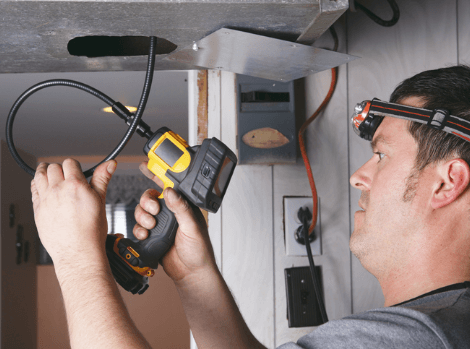Detecting Sneaky Plumbing Leaks at Home

Most people rely on their intricate plumbing systems at home every single day. After all, everyday activities like using the toilet down to washing the clothes can become a challenge without a reliable plumbing system.
During the summer, water consumption increases dramatically as more people fill up their pools or shower more often to wash off the sweat after a hot day. Your plumbing system can also work extra if you have some visitors staying at home.
That said, preventative maintenance checks and leak detection inspection are deemed especially helpful during those times of the year.
While water leaks are quite common, not all are as obvious as a burst sprinkler head or a leaking tap. If truth be told, leaks can happen anywhere—in the drains, sinks, showers, and bathtubs.
Apart from causing your water bills to skyrocket dramatically, leaking water from your pipes can cause significant damage to your health and home. Decay, water stains, flood, and mold and mildew growth often point to undetected water leaks.
Fortunately, our leak detection experts at Sherlock Leak Detection use innovative technology to ensure leaks are located, isolated, and fixed before a messy cleanup is necessary.
How You Can Find Plumbing Leaks at Home
While leak detection is best left in the hands of experts, you can use the following simple detection methods to identify water leaks at home:
How to check if you have a plumbing leak
If you suspect you have a water leak, perform a meter test to check your current water usage. Observe how the dial moves on the meter and take note of the numbers. Then turn off all your faucets and disconnect all the appliances connected to water in your property.
Recheck the meter to see if the dial still moves. Ideally, there should be no movement at all because all the water appliances have been switched off. If the dial still moves, you likely have a leak somewhere at home.
Places that are vulnerable to water leaks include:
Kitchen
Kitchen water leaks typically occur in the following places:
- Around the sink
- The supply pipes located at the base of the sink
- Faucet
If you own a two-story house and your kitchen is situated on the second floor, check the ceiling below the kitchen and look for dark stains that may point to a water leak.
Faucet
To test if your water is leaking, pour water slowly along the edges of the sink and the faucet base. Check if there are any water drips at the bottom. Water drips are a clear indication that water may be seeping through a tiny gap between the countertop and the faucet base.
It is also recommended that you check if the faucet base is loose. When the joint where the countertop meets the faucet loosens, small amounts of water can make their way to the area below.
Sink
Water leaks from the sink can often cause damage to the kitchen benchtop. If you have a loose laminate benchtop, it can be attributed to the caulk’s weakening around the sink because of water damage.
Supply Pipes
Check if the area under the kitchen cabinet has water puddles, rotting floorboards, or any signs of dampness. They can be clear indicators that there’s a leak originating from the supply pipes located inside the cabinet.
To further investigate the drain and supply pipes more thoroughly, turn on the tap in the sink and pass a cloth over each of the pipes’ edges. If the fabric has a small wet mark, then you have a leak.
Bathroom
Water leaks in your bathroom usually occur in the following places:
- Bathroom flooring
- Toilet
- Caulking in tiles and between surfaces
Toilet
To check if your toilet system has a leak, put a few drops of food coloring to your water tank located above the toilet. Without flushing, look for signs of any change in the toilet water. If the food coloring makes its way into the toilet tank, this indicates a water leak between the toilet and the tank.
Caulking in tiles and between surfaces
Look for any signs of peeling wallpaper or paint on the outside and inside walls of your bathroom. The peeling effect can be attributed to water finding its way through the caulk. Regular shower leaks can also expose bathroom tiles to water. When the water seeps through the caulk and grout, the tiles can loosen over time.
Conclusion
Water leaks can cause significant damage to property (and your health) if not detected and addressed right away. Therefore, it is recommended that you schedule regular leak detection checks to ensure your pipes stay watertight and any leaks are detected early.
The good news is plumbing leaks can be detected effortlessly without turning your home upside down. All you need is the help and expertise of our leak specialists at Sherlock Leak Detection.

